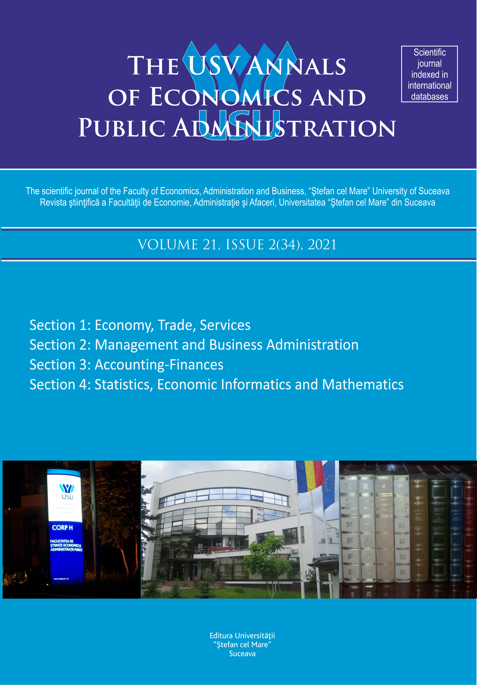GENDER GAP IN ENTREPRENEURSHIP IN SOME OF OECD COUNTRIES
DOI:
https://doi.org/10.4316/aepa.2021.21.2(34).21-26Abstract
The aim of this paper is to study the gender gap in entrepreneurship in some of OECD countries. The research methodology is based on a descriptive analysis and multivariate analysis of the data series collected from the Global Entrepreneurship Monitor website and OECD.Stat. The research included 31 OECD member countries, the data being downloaded from the organization's website and refers to 2019 year. The results show that there is a positive and strong correlation between the share of self employed women and men who are employers. A determining factor that could explain this correlation could be the entrepreneurial culture in each country. In order to eliminate gender disparities in participation and economic opportunities, it is important to find the reasons for this gap. According to the Global Report on Gender Differences, published by World Economic Forum in December 2018, there is a 68% worldwide. At the current rate, the data suggest that it will take 108 years to erase global gender differences. The global disparity index is based on four sub-indices: opportunities and economic participation, education, health and survival, empowerment and political power. In terms of opportunities and economic participation, they can be assessed by looking at: labor market participation ("participation gap"), the ratio of estimated incomes of women and men and equal pay for similar work ("pay gap"); and the relationship between women and men among legislators, senior officials and managers, as well as the ratio between women and men among technical and professional workers ("promotion gap").

